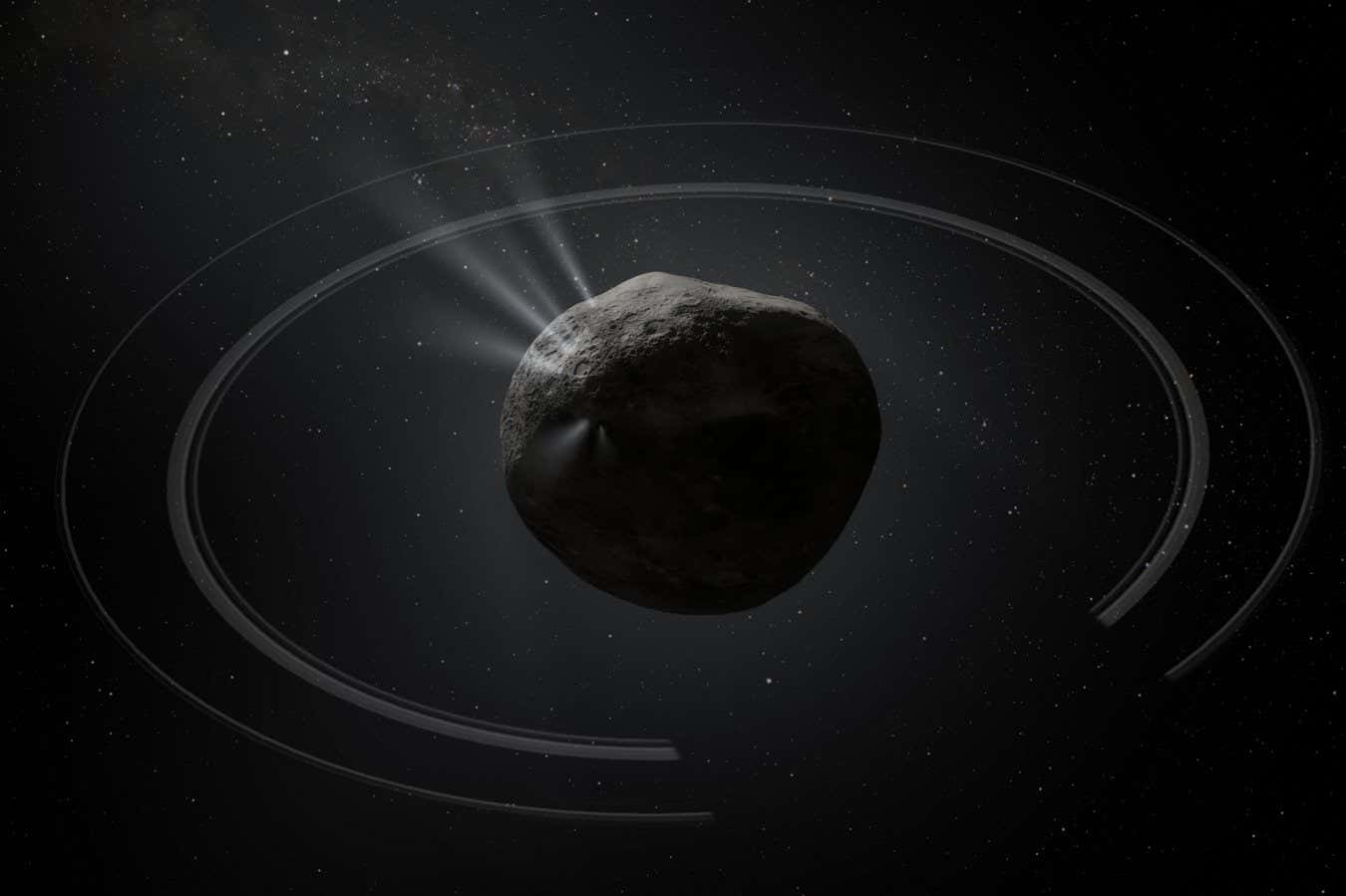Key Takeaways
- Astronomers are observing the formation of Chiron’s ring system in real time for the first time.
- New observations revealed an additional disc of material and an unseen outer ring around Chiron.
- Understanding Chiron’s ring formation may provide insights into the dynamics of ring systems in the solar system.
Real-Time Observation of Chiron’s Rings
For the first time, astronomers have successfully observed the formation of a ring system around Chiron, a comet-like object located between the orbits of Saturn and Uranus. This observation marks a significant milestone, as the rings appear to change with each observation, reflecting the dynamic nature of this celestial body.
Chiron is not unique in having rings; other small celestial objects such as the asteroid Chariklo and dwarf planets like Haumea and Quaoar also possess ring systems. The technique used to discover these rings is called stellar occultation. This involves monitoring when an object passes in front of a distant star, allowing scientists to map how the star’s light is obscured by orbiting material. According to Bruno Sicardy from the Paris Observatory, “There are only maybe 20 objects that have been observed through stellar occultations, so observing four of them with rings is high statistics.” He believes that, given the number of celestial bodies in the solar system, more ring systems are likely to be discovered.
In a stellar occultation event in 2023, Sicardy and his team were able to gain a clearer understanding of Chiron’s ring structure. Previous findings suggested the presence of three rings, but the latest observations identified an additional disc of material surrounding these rings, extending further into space. Furthermore, a new outer ring was detected, which had never been observed before.
“This is a unique opportunity,” Sicardy noted. “Nature is showing us a ring in the formation stage, which is very lucky for us, because when we look at Saturn’s rings or Uranus’s rings, or even Chariklo’s rings, they basically always stay the same.” This observation provides a rare glimpse into the processes behind ring formation, an aspect that has been largely unknown.
Rings can form in various ways, and monitoring their formation offers a chance to deepen our understanding of the conditions necessary for their creation, maintenance, and eventual dissipation. Chrystian Pereira from the National Observatory of Brazil emphasized that this research could illuminate why such celestial rings are predominantly found in the cold, icy regions of the solar system.
Overall, the ongoing study of Chiron’s rings not only enriches our current knowledge but also raises intriguing questions about the dynamics of rings around other celestial bodies. As technology and observation techniques improve, it is expected that astronomers will uncover many more ring systems in the future, broadening our perspective on the complexities of our solar system.
The content above is a summary. For more details, see the source article.















